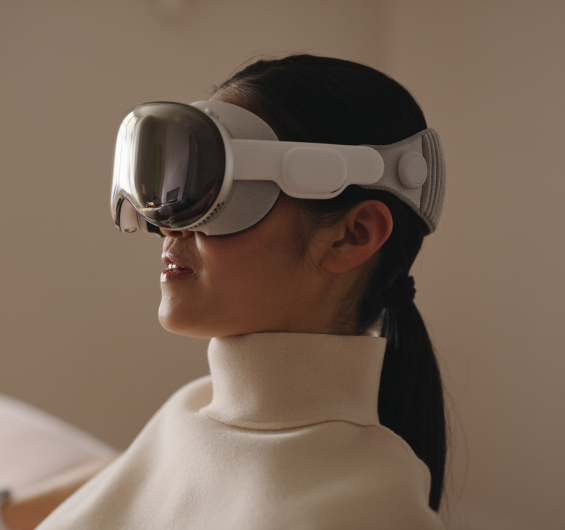Cedars-Sinai mental health app launches on Apple Vision Pro

Right after the official launch of the new Apple Vision Pro mixed reality headset, Cedars-Sinai has launched a generative artificial intelligence (GenAI) app that will use the technology to provide mental health support for patients.
The app – eXtended-Reality Artificially Intelligent Ally, or Xaia – was created by clinicians and AI experts at Cedars-Sinai to provide conversational therapy and personalised coaching to patients in a calming virtual environment, alongside other exercises like deep breathing and meditation.
The therapy is delivered by a virtual avatar that has been programmed to simulate a human therapist, according to Xaia’s developers and, if needed, can also connect users with a licensed therapist for a virtual session. Other features include appointment scheduling, access to medical records, and management of medications.
“Apple Vision Pro offers a gateway into Xaia’s world of immersive, interactive behavioural health support – making strides that I can only describe as a quantum leap beyond previous technologies,” said Brennan Spiegel, director of Health Services Research at the Los Angeles-based institute and co-founder of the Xaia technology, which will be commercialised by a new start-up called VRx Health.
“With Xaia and the stunning display in Apple Vision Pro, we are able to leverage every pixel of that remarkable resolution and the full spectrum of vivid colours to craft a form of immersive therapy that’s engaging and deeply personal,” he added.

Apple launched the new headset last Friday at its flagship Fifth Avenue store in New York City, with some of the tech giant’s diehard fans queuing up to get their hands on the device, which has a starting price of $3,500.
Given that price point, it is perhaps not surprising that the company’s main strategy is not direct sales to consumers; rather, it is positioning Apple Vision Pro as an enterprise technology that can be used by companies and other large organisations. While it is early days, Cedars-Sinai’s announcement suggests it may make headway with that approach.
The headset also provides a companion to the Apple Watch for the company in wearables that can have health applications, and is the first major new product launch for the group since the watch’s debut in 2015.
Market watchers are not expecting massive sales, at least initially. Apple has reportedly trimmed down its launch expectations for unit sales in the first 12 months from 3 million, but analysts have suggested that its pricing and enterprise approach could keep that figure down below 200,000, according to a report in The Economist.
There are some key differences with rival VR headsets, like Meta’s Quest range, Valve Index, and HTC Vive Pro 2; notably, that there is no need to hold devices to interact with the mixed reality environment, as users do so using hand gestures. It also doesn't include a battery in the headset itself, making it smaller and lighter. That does mean, however, that the unit needs a cable to tether it to an external battery.
Apple is also trying to move away from the idea that the device is an augmented, virtual, or even a mixed reality headset, preferring to call it a “spatial computing” device, which reflects its desire to position it as a new way to interact with digital content and tools. It launches with around 600 apps and games available in the App Store.












